Table Of Content
- Understanding Wildlife Behavior
- Instincts and Reactions
- Common Wildlife Reactions
- Staying Safe Around Wildlife
- Choosing the Right Campsite to Minimize Wildlife Encounters
- Location, Location, Location!
- Keep It Clean
- Visibility Matters
- Proximity to Trails
- Light and Noise Levels
- Keeping Wildlife at Bay: Proper Food Storage and Disposal Methods
- Here are some essential tips to prevent wildlife encounters
- Easy methods to manage waste responsibly
- Additional Do’s and Don’ts to keep in mind
- Keeping a Safe Distance and Respecting Wildlife’s Territory
- Understand Their Behavior
- Choose Your Campsite Wisely
- Proper Food Storage
- Respect Their Territory
- Identifying Common Wildlife Signs and Tracks
- Tracks
- Scat
- Scratching or Rubbing Marks
- Best Practices for Handling Unexpected Wildlife Encounters
- Stay Calm and Assess the Situation
- Back Away Slowly
- Make Yourself Big and Loud
- Do Not Run
- Carry Bear Spray or Deterrents
- Using Wildlife Deterrents Safely and Effectively
- Understand the Importance of Wildlife Deterrents
- Choose the Right Deterrents
- Proper Placement and Usage
- Regular Maintenance and Inspection
- Be Mindful of Wildlife’s Response
- What to Do in Case of Aggressive Wildlife Behavior
- Stay Calm and Back Away Slowly
- Do Not Run or Scream
- Make Yourself Appear Larger
- Do Not Corner the Wildlife
- Use Noise and Motion to Deter the Animal
- Engaging in Responsible Wildlife Photography
- Observe from a Distance
- Be Mindful of Your Impact
- Use Telephoto Lenses
- Avoid Baiting or Luring Wildlife
- Teaching Children About Wildlife Safety in Camping
- Understanding Wildlife Behavior
- Choosing the Right Campsite to Minimize Wildlife Encounters
- Proper Food Storage and Disposal Methods
- Keeping a Safe Distance and Respecting Wildlife’s Territory
- Identifying Common Wildlife Signs and Tracks
- Seeking Help and Reporting Wildlife Incidents
- Steps to Take When Facing a Wildlife Incident
- Reporting Wildlife Incidents
- Frequently Asked Questions (FAQs)
- Q: How can I avoid wildlife encounters while camping?
- Q: What should I do if I encounter wildlife while camping?
- Q: How should I handle food to prevent attracting wildlife?
- Q: What wildlife safety tips should I follow while hiking?
- Q: How can I protect my campsite from wildlife intrusion?
- Q: What should I do if a bear approaches my campsite?
As avid campers and nature lovers, we are always in awe of the diverse wildlife that surrounds us in the great outdoors. While encountering wildlife can be a thrilling experience, it is crucial to prioritize wildlife safety to ensure a harmonious coexistence with these magnificent creatures. In this blog post, we will delve into essential camping wildlife tips that will help you stay safe and avoid encounters with wildlife during your outdoor adventures.
When venturing into the wilderness, it is important to remember that you are stepping into the natural habitat of various animals. To minimize the risk of wildlife encounters, it is vital to practice caution and respect towards these creatures. By following simple yet effective wildlife safety measures, you can enjoy your camping experience while ensuring the well-being of both yourself and the wildlife around you.
From tips on avoiding wildlife encounters to understanding how to handle wildlife sightings responsibly, this guide will equip you with the knowledge and skills needed to navigate the wilderness safely. By being proactive and informed about wildlife safety, you can make the most of your camping trip without compromising on the well-being of the captivating wildlife that calls the outdoors their home.
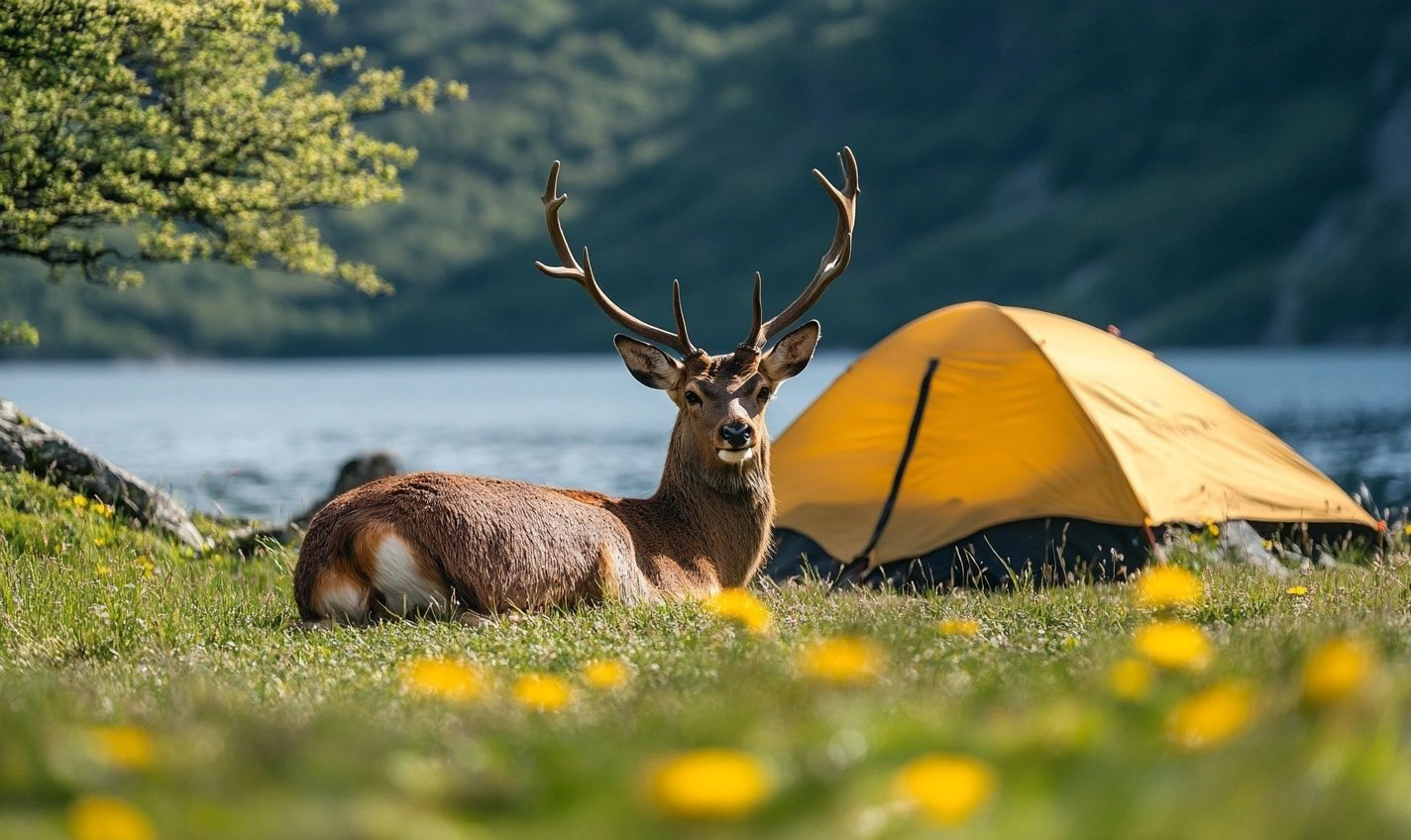
Understanding Wildlife Behavior
When venturing into the great outdoors, encountering wildlife is an inevitable part of the experience. Understanding how animals behave in their natural habitats is crucial for both your safety and the well-being of the wildlife you encounter.
Instincts and Reactions
Wild animals operate on instinct, reacting to stimuli in ways that ensure their survival. Understanding these behaviors can help you predict their reactions and know how to respond appropriately.
Common Wildlife Reactions
Here are some typical reactions you may encounter and how to deal with them:
- Fear: Animals may flee when they sense your presence. Respect their need to escape and avoid pursuing them.
- Defensiveness: Mothers protecting their young or animals feeling cornered may act aggressively. Back away slowly without making sudden movements.
- Curiosity: Some animals may approach out of curiosity. Stand tall, make noise, and slowly back away to discourage them.
Staying Safe Around Wildlife
By following these tips for handling wildlife encounters, you can minimize the risk of dangerous situations:
- Avoid Surprising Wildlife: Make noise while hiking to alert animals of your presence.
- Keep Food Secure: Properly store food and dispose of waste to prevent attracting wildlife to your campsite.
- Respect Their Space: Keep a safe distance from animals and never attempt to feed them.
- Know How to React: Educate yourself on the behaviors of the wildlife in the area you are visiting.
Remember, wildlife encounters can be awe-inspiring and enriching experiences when handled responsibly. By respecting nature and understanding wildlife behavior, you can enjoy a safe and harmonious coexistence with the creatures that call the outdoors their home.
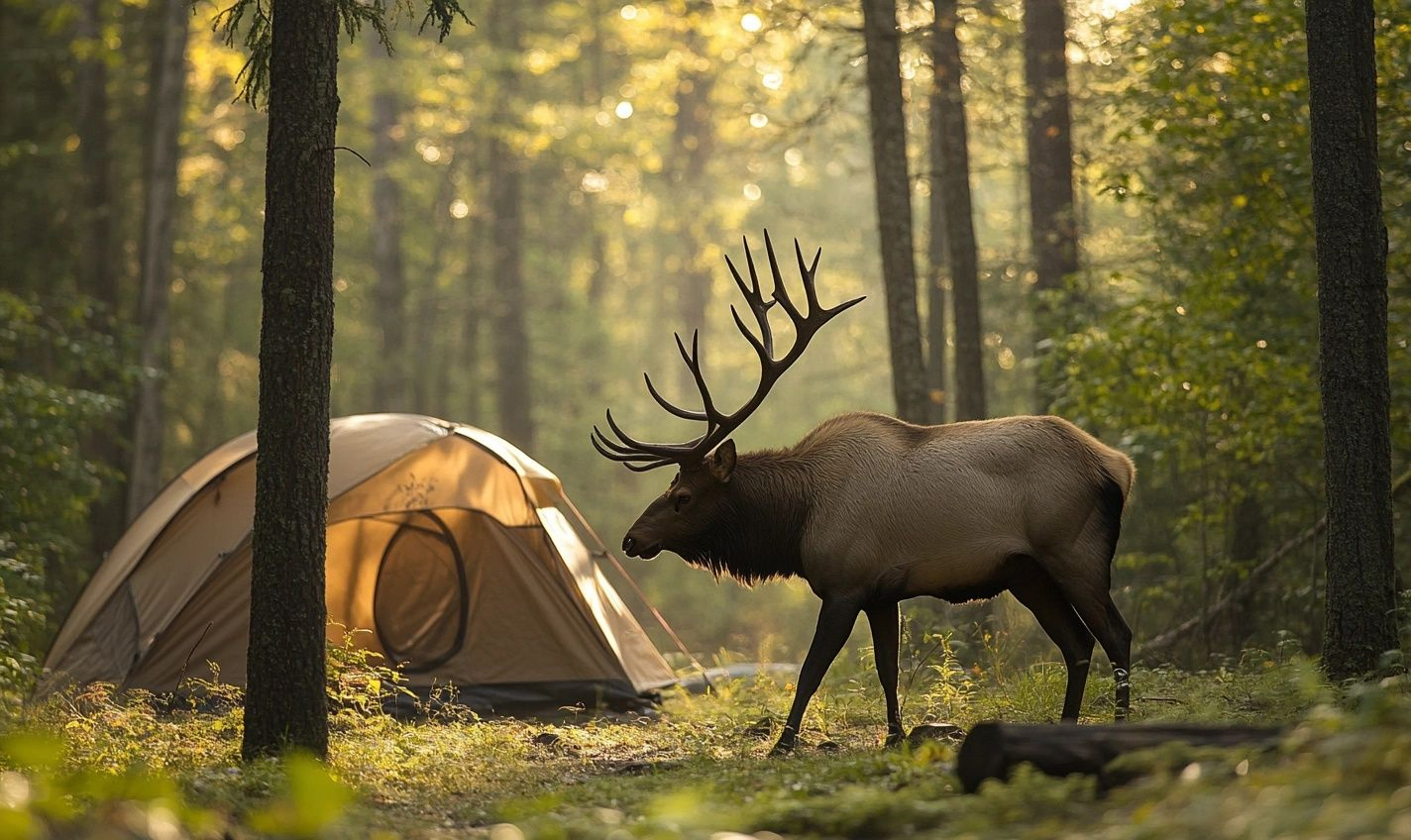
Choosing the Right Campsite to Minimize Wildlife Encounters
When setting up camp in the great outdoors, being mindful of your campsite selection can significantly reduce the risk of wildlife encounters. Here’s how you can choose a spot that prioritizes wildlife safety:
Location, Location, Location!
Position your campsite away from wildlife habitats to minimize the chance of unexpected visitors. Ensure your spot is not near water sources or game trails that animals frequent.
Keep It Clean
Opt for a campsite that is well-maintained and free of food scraps or remnants. Select an area where proper food storage can be easily implemented to avoid attracting curious critters.
Visibility Matters
Choose a site with good visibility to observe any approaching wildlife. Avoid setting up camp in dense vegetation or areas with limited sightlines, as this may increase the likelihood of surprise encounters.
- Select a campsite that is open and offers a clear view of your surroundings.
- Avoid secluded spots that may be hotspots for wildlife activity.
- Ensure you have a good vantage point to spot any potential wildlife visitors from afar.
Proximity to Trails
Consider the proximity of your chosen campsite to popular hiking or wildlife pathways. Picking a location further away from heavily trafficked trails can reduce the chances of wildlife wandering into your camp.
- Scout for a site that is a reasonable distance from known wildlife routes.
- Respect the natural flow of animals and avoid blocking their pathways.
- Choose a location that minimizes human interference with local wildlife movement.
Light and Noise Levels
Assess the lighting and noise conditions of the area where you plan to set up camp. Opt for a location with moderate lighting at night and minimal human-made noises to avoid attracting curious wildlife due to artificial disruptions.
By strategically selecting a campsite that aligns with these guidelines, you can create a safer environment for both yourself and the wildlife that call the outdoors their home.
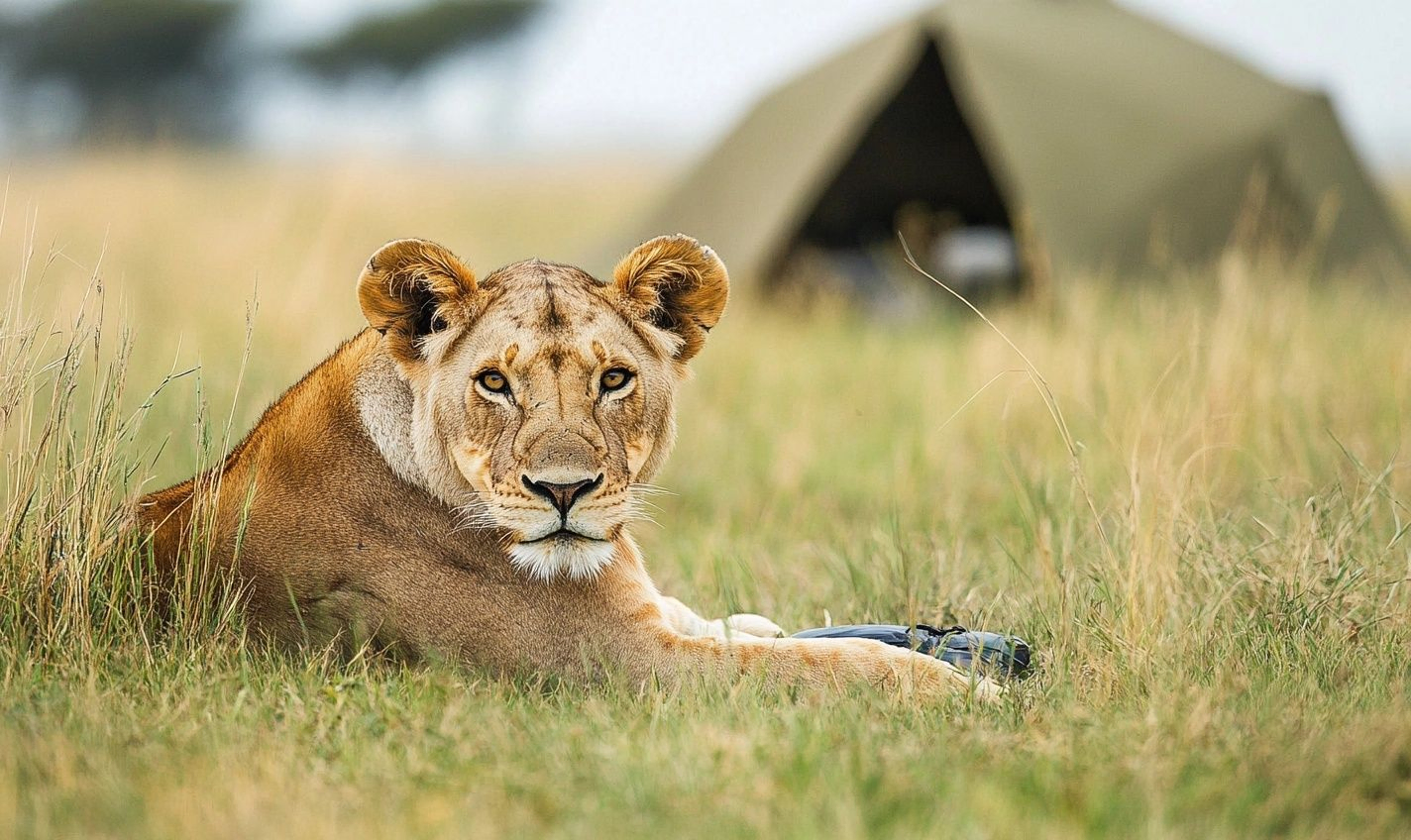
Keeping Wildlife at Bay: Proper Food Storage and Disposal Methods
Imagine sitting by the campfire, roasting marshmallows, and swapping stories under the starry sky. But what if unwanted visitors, like bears or raccoons, interrupt this idyllic scene in search of a midnight snack?
Here are some essential tips to prevent wildlife encounters:
Seal It Tight: Keep food items, toiletries, and any scented items in airtight containers to eliminate tempting smells that could attract curious critters.
Store it Properly: Use bear-proof containers, lockers, or hang food bags from a sturdy tree branch at least 10-15 feet off the ground and 4 feet from the trunk. Remember, a fed animal is a dead animal.
Easy methods to manage waste responsibly:
Trash Disposal: Double-bag trash and keep it in sealed containers. Dispose of it in designated bins or take it with you when leaving the campsite.
Leftovers: Avoid leaving any scraps behind – even biodegradable food. Leftovers can attract unwelcome guests and disrupt the area’s ecosystem.
And what about food scraps and leftover crumbs? Wildlife interprets these as an open invitation – a welcome sign to a buffet!
Additional Do’s and Don’ts to keep in mind:
- Don’t eat in tents and avoid sleeping in the same clothes you wore while cooking.
- Carry odor-proof bags to contain leftovers and hang them alongside food bags.
Remember, wildlife safety isn’t just about protecting yourself; it’s about respecting the natural habitat you’re visiting. By following these simple guidelines, you can minimize wildlife encounters and create a safer environment for you, your group, and the animals that call the wilderness home.
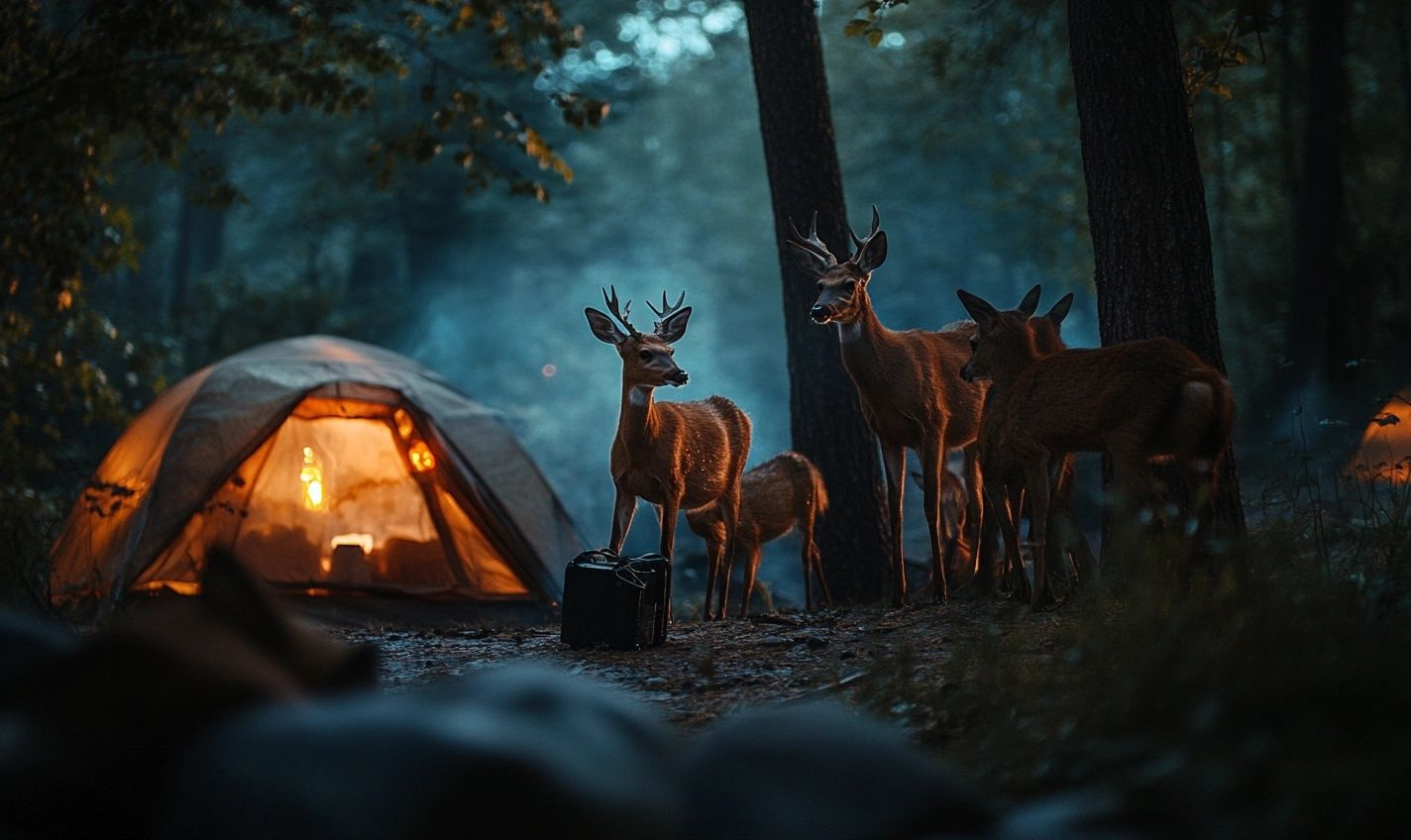
Keeping a Safe Distance and Respecting Wildlife’s Territory
Wildlife encounters can be magical but also potentially dangerous. To ensure your safety and the well-being of the animals, it’s crucial to keep a safe distance and respect their territory while camping in the great outdoors. Here are some tips to help you navigate wildlife encounters responsibly:
Understand Their Behavior:
Each species of wildlife has unique behaviors and habits. Take the time to learn about the animals you may encounter, so you can understand their natural tendencies.
Choose Your Campsite Wisely:
Opt for designated campsites away from known wildlife habitats to minimize the risk of unexpected encounters. Avoid setting up camp near water sources or food storage areas for animals.
Proper Food Storage:
Keep all food, garbage, and scented items securely stored in bear-proof containers or hung high up in trees. Properly dispose of any waste to avoid attracting wildlife to your campsite.
Respect Their Territory:
Do not approach or feed wild animals. If you come across wildlife, maintain a safe distance and observe them from afar. Respect their space and avoid interrupting their natural behavior.
Remember, wildlife safety is a two-way street. By respecting their territory, you not only protect yourself but also safeguard the animals from unnecessary stress and harm. It’s our responsibility as campers to coexist with wildlife harmoniously. So, next time you’re out in nature, take a moment to appreciate these magnificent creatures from a distance. The wilderness is their home, and we are just visitors passing through.
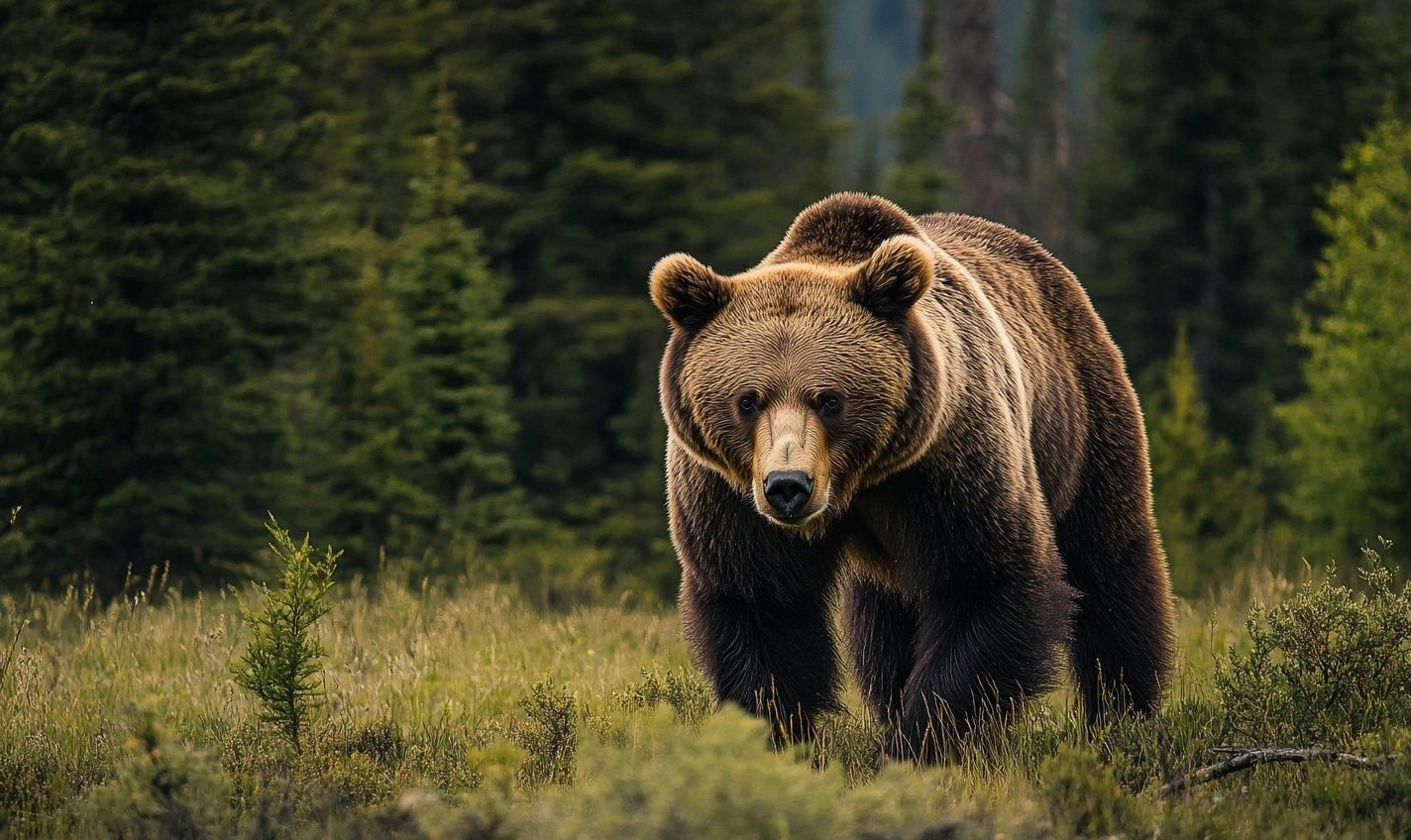
Identifying Common Wildlife Signs and Tracks
When you’re out in the great outdoors, it’s essential to be aware of the signs that indicate wildlife presence. By learning to recognize these, you can better understand the environment you’re in and take necessary precautions to ensure wildlife safety. Here are some common wildlife signs and tracks to look out for:
Tracks:
- Pay attention to footprints in mud or soft soil.
- Look for claw marks or indentations that show the shape of the animal’s foot.
- Identify the number of toes and the size of the track to determine the type of wildlife.
Scat:
- Keep an eye out for droppings along trails or near water sources.
- Observe the size, shape, and contents of the scat to identify which animal it may belong to.
- Remember that different animals have distinct scat characteristics.
Scratching or Rubbing Marks:
- Notice marks on trees or rocks where animals have scratched or rubbed against.
- These signs can indicate territory marking or the presence of certain species in the area.
By familiarizing yourself with these wildlife signs, you can gain insight into the species around you and adjust your behavior accordingly. Remember, respecting wildlife’s natural habitat is crucial for both your safety and the animals’ well-being.
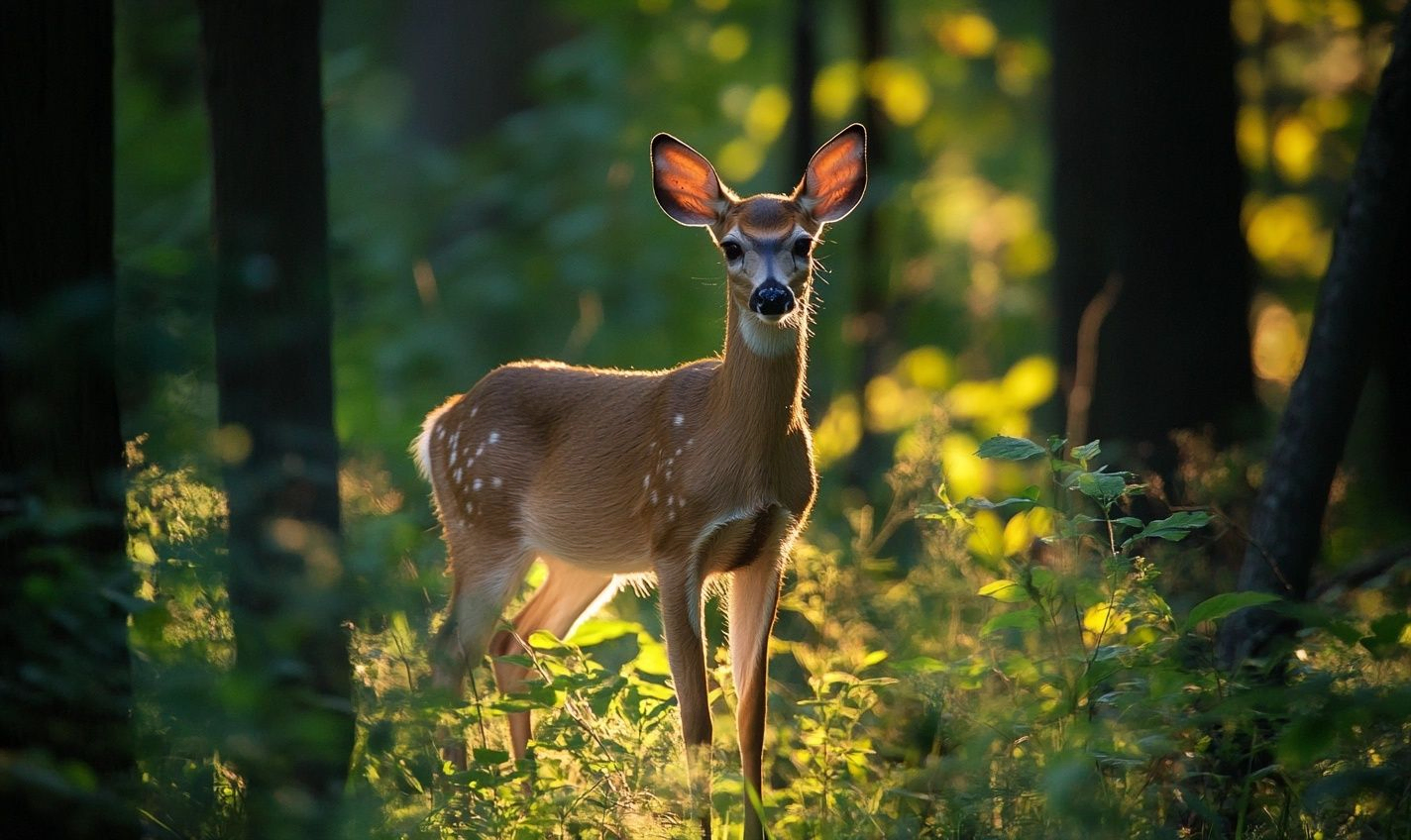
Best Practices for Handling Unexpected Wildlife Encounters
So you’re out in the wilderness, enjoying nature’s beauty when suddenly, you come face to face with a wild animal. What should you do? How can you ensure your safety and the animal’s well-being? Let’s dive into some essential tips for handling unexpected wildlife encounters.
Stay Calm and Assess the Situation
First and foremost, wildlife safety starts with remaining calm. Panicking can escalate the situation and trigger the animal’s defensive instincts. Take a deep breath, and assess the scene before you take any action.
Back Away Slowly
If you encounter a wild animal, especially predators like bears or mountain lions, backing away slowly can help de-escalate the situation. Avoid sudden movements and maintain eye contact without staring directly into their eyes. Slowly increase your distance from the animal.
Make Yourself Big and Loud
Wildlife encounters can sometimes be intimidating, but making yourself appear larger and louder can deter the animal. Raise your arms, stand tall, and speak loudly and firmly to assert your presence.
Do Not Run
Running away from a wild animal can trigger their chase instincts. Avoid turning your back and sprinting as it may provoke the creature to see you as prey. Maintain a steady pace as you move away slowly.
Carry Bear Spray or Deterrents
Wildlife deterrents like bear spray can be effective in deterring aggressive animals. Have them easily accessible and know how to use them properly to defend yourself in case of an attack.
- Keep bear spray in a holster on your belt for quick access.
- Ensure bear spray is not expired and practice using it beforehand.
Always prioritize your safety and well-being in the event of an unexpected wildlife encounter. By following these camping wildlife tips, you can navigate such situations with caution and respect for the animals that share our natural habitats.
Using Wildlife Deterrents Safely and Effectively
When you’re out camping in the great outdoors, it’s important to be prepared for potential wildlife encounters. Understanding how to avoid wildlife encounters and handle wildlife is crucial for a safe and enjoyable camping experience. One essential aspect of wildlife safety is knowing how to use wildlife deterrents effectively. Here are some tips to help you stay safe around wildlife.
Understand the Importance of Wildlife Deterrents
Wildlife deterrents are tools or methods used to keep wildlife at bay and prevent potential encounters. By using wildlife deterrents properly, you can reduce the risk of conflicts with animals and promote coexistence in their natural habitat.
Choose the Right Deterrents
When selecting wildlife deterrents, opt for non-lethal options that are safe for both animals and the environment. Look for products like bear spray, noise devices, or visual deterrents to discourage animals from entering your camping area.
Proper Placement and Usage
Ensure you follow the instructions provided with the deterrents for safe and effective use. Place them strategically around your campsite to create a barrier without harming wildlife. For example, hang your food supplies in a bear-proof container away from your sleeping area.
- Keep food and garbage sealed tightly to reduce attraction.
- Make noise periodically to alert wildlife of your presence.
- Consider using motion-activated lights or sprinklers for added protection.
Regular Maintenance and Inspection
Check your wildlife deterrents regularly to ensure they are functioning correctly. Replace batteries, refill sprays, or repair any damage to keep them effective. Consistent maintenance is key to avoiding unexpected encounters with wildlife.
Be Mindful of Wildlife’s Response
While using wildlife deterrents, observe how animals react to them. Respect their space and be aware of any signs of stress or discomfort. If wildlife continues to approach despite the deterrents, consider relocating your campsite to a safer area.
Remember, wildlife safety is a shared responsibility. By using wildlife deterrents safely and effectively, you can minimize potential encounters and ensure a harmonious coexistence with the natural world.
What to Do in Case of Aggressive Wildlife Behavior
Encountering wildlife during your camping trip can be a thrilling experience, but it’s crucial to know how to handle aggressive wildlife behavior to ensure the safety of both yourself and the animals. Here are some essential camping wildlife tips to follow:
Stay Calm and Back Away Slowly
First and foremost, if you encounter an animal exhibiting aggressive behavior, such as growling, hissing, or charging, it’s essential to remain calm. Quick movements can startle the animal further. Slowly back away while keeping eye contact with the animal.
Do Not Run or Scream
Running away from a wild animal triggers their predatory instincts and may provoke them to chase you. Similarly, screaming can agitate the animal further. Try to maintain a steady and composed demeanor.
Make Yourself Appear Larger
If you’re dealing with a bear, cougar, or other large predator, try to make yourself appear larger by raising your arms above your head and standing tall. This action can intimidate the animal and potentially deter an attack.
Do Not Corner the Wildlife
Animals can become aggressive when they feel trapped or cornered. Ensure you leave an open path for the animal to escape. Avoid blocking their way or moving closer to them.
Use Noise and Motion to Deter the Animal
Make loud noises by clapping your hands, shouting, or using a whistle to scare off the animal. Additionally, moving your arms and waving objects can make you appear less like prey and more intimidating to the wildlife.
Remember, wildlife safety is a shared responsibility. By understanding how to respond to aggressive wildlife behavior, you can minimize the risk of dangerous encounters and protect both yourself and the animals in their natural habitat.
Engaging in Responsible Wildlife Photography
When we venture into the great outdoors, encountering wildlife is often a highlight of the experience. Capturing these moments through photography allows us to preserve memories and share the beauty of nature with others. However, it’s crucial to practice wildlife safety and respect when engaging in wildlife photography. Here are some essential tips to ensure a positive and safe interaction:
Observe from a Distance
Respecting the natural habitat of wildlife is essential. Keep a safe distance to avoid altering their behavior or provoking them. Remember, getting that perfect shot is not worth endangering yourself or the animals.
Be Mindful of Your Impact
Consider the potential effects of your presence on the animals and the environment. Make sure to follow Leave No Trace principles and minimize any disruption to the wildlife and their surroundings.
Use Telephoto Lenses
Utilizing telephoto lenses allows you to maintain a safe distance while still capturing detailed shots. This approach not only ensures your safety but also respects the natural behavior of the animals.
Avoid Baiting or Luring Wildlife
Feeding or enticing wildlife for a photograph can have negative consequences for both the animals and yourself. It can alter their natural behaviors, create dependency on humans, and even pose risks of aggression.
Remember, the goal of wildlife photography should be to celebrate and preserve these incredible creatures in their natural habitats. By following these camping wildlife tips and practicing responsible photography, you can create meaningful and impactful images while safeguarding both yourself and the wildlife.
Teaching Children About Wildlife Safety in Camping
As parents and guardians, wildlife safety is a crucial skill to impart to children, especially when venturing into the great outdoors. Teaching our young ones how to respect and coexist with wildlife can make all the difference in ensuring a safe and enjoyable camping experience for the whole family.
Understanding Wildlife Behavior
Children should be taught to observe and understand wildlife behavior from a safe distance. It’s essential to explain that wild animals are unpredictable and should never be approached or disturbed.
Choosing the Right Campsite to Minimize Wildlife Encounters
When setting up camp, opt for designated camping areas that are away from wildlife habitats to reduce the risk of unexpected encounters.
Consider these tips:
- Stay in well-traveled areas
- Avoid camping near water sources
- Keep a clean campsite to deter wildlife
Proper Food Storage and Disposal Methods
To prevent attracting wildlife to your campsite, store food securely in sealed containers and dispose of all waste properly. Remember, food scraps can lure in unwanted visitors.
Keeping a Safe Distance and Respecting Wildlife’s Territory
Teach children the importance of keeping a safe distance and respecting wildlife’s territory. Help them understand that invading an animal’s space can lead to dangerous situations for both parties.
Identifying Common Wildlife Signs and Tracks
Encourage kids to keep an eye out for wildlife signs and tracks while hiking or exploring. Learning to recognize these indicators can help them stay alert and avoid potential wildlife encounters.
By instilling these wildlife safety practices early on, we equip our children with the knowledge and skills needed to enjoy the wonders of nature responsibly and safely.
Seeking Help and Reporting Wildlife Incidents
Encountering wildlife while camping can be exhilarating, but it’s essential to remember that they are wild animals and should be treated with respect. In the event of a wildlife incident, knowing how to seek help and report it can make a significant difference in ensuring both your safety and the well-being of the animals.
Steps to Take When Facing a Wildlife Incident:
But what can you do in such a situation? Here are some practical steps to follow:
- Remain calm and try to assess the situation from a safe distance.
- If the wildlife encounter is non-threatening and the animal is simply passing through, enjoy the moment from a safe distance.
- But if the encounter escalates or the animal exhibits aggressive behavior, slowly back away without turning your back on the animal.
- Once you are at a safe distance, find a spot to observe the animal’s behavior and assess the situation.
Reporting Wildlife Incidents:
If you come across a wildlife incident that requires intervention or poses a threat to human safety, reporting it to the appropriate authorities is crucial. Here’s how to go about it:
- Inform park rangers, campsite staff, or local wildlife authorities about the incident as soon as possible.
- Provide detailed information about the location, type of wildlife, behavior exhibited, and any other relevant details.
- Avoid wildlife encounters and keep a safe distance while waiting for help to arrive.
Remember, reporting wildlife incidents not only helps protect yourself and others but also aids in the conservation and preservation of wildlife habitats.
Handling wildlife encounters with care and responsibility contributes to a safer camping experience for everyone involved. By being mindful of wildlife safety measures and taking prompt action when necessary, you can enjoy the great outdoors while respecting the natural world around you.
Conclusion
In conclusion, when it comes to wildlife safety while camping, prevention is always key. By following simple yet crucial guidelines such as proper food storage, avoiding direct contact, and respecting their natural habitat, you can significantly reduce the risks of encountering dangerous wildlife.
Remember, wildlife encounters can be unpredictable, so it’s essential to stay vigilant and informed at all times. Educate yourself and your camping group on the local wildlife species you might encounter and how to react appropriately in case of an encounter.
By implementing these camping wildlife tips and staying proactive in your approach to wildlife safety, you can ensure a safe and enjoyable outdoor experience for yourself and your companions. Remember, the wilderness is their home, and we are just guests in their territory.
By respecting wildlife, being aware of your surroundings, and practicing caution, you can coexist harmoniously with the creatures that call the great outdoors their home. So, embrace the beauty of nature, but always prioritize safety first when it comes to wildlife encounters during your camping adventures.
Frequently Asked Questions (FAQs)
Q: How can I avoid wildlife encounters while camping?
A: To avoid wildlife encounters while camping, store food properly, keep a clean campsite, make noise while hiking, and follow all park regulations.
Q: What should I do if I encounter wildlife while camping?
A: Stay calm, make yourself look bigger, slowly back away, and do not run from the wildlife.
Q: How should I handle food to prevent attracting wildlife?
A: Store food in airtight containers or bear-proof canisters, never keep food in your tent, and dispose of food scraps properly.
Q: What wildlife safety tips should I follow while hiking?
A: Hike in groups, make noise to alert animals of your presence, and be aware of your surroundings.
Q: How can I protect my campsite from wildlife intrusion?
A: Keep a clean campsite, avoid bringing strong-smelling items like perfumes, lotions, or food into your tent, and hang food in a bear bag away from your campsite.
Q: What should I do if a bear approaches my campsite?
A: Remain calm, speak calmly, back away slowly, and do not make direct eye contact.







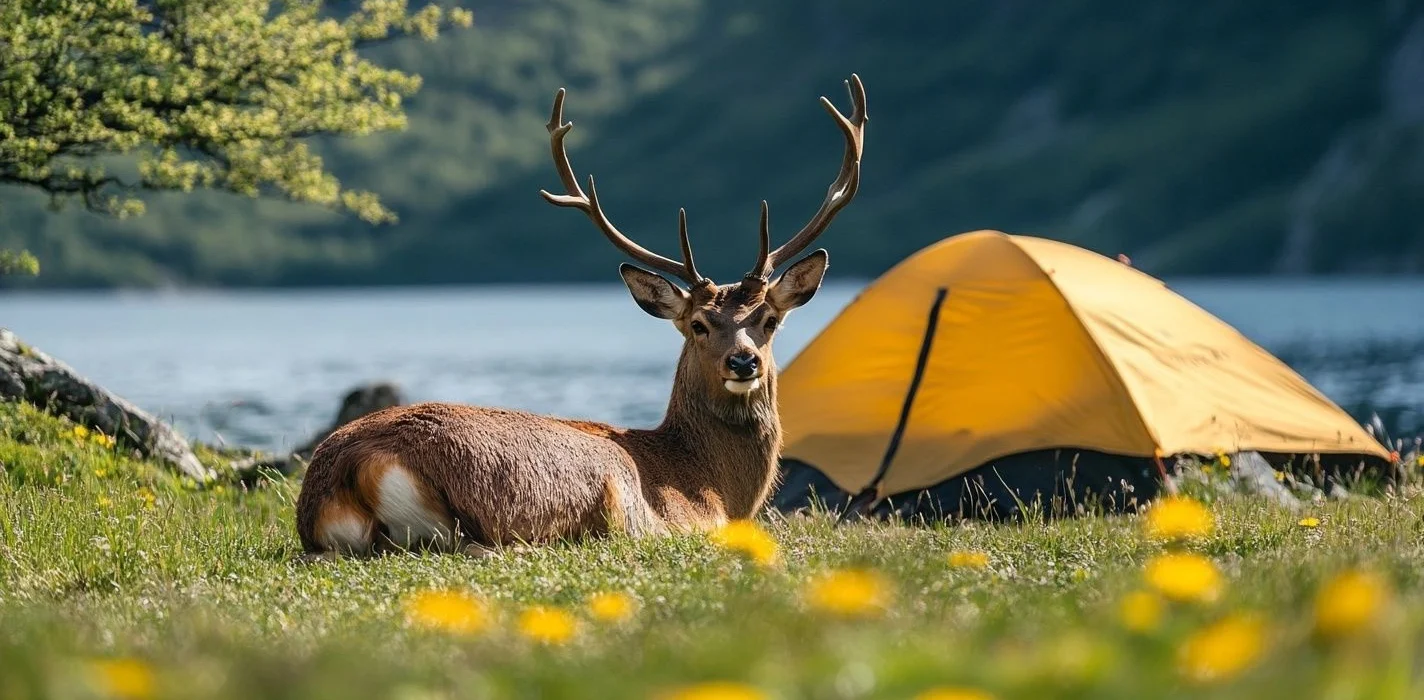
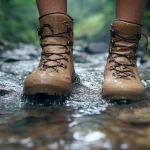
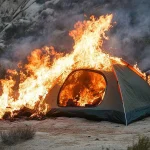
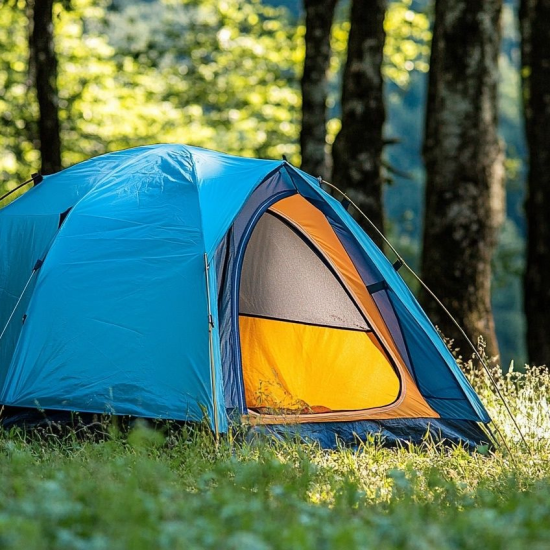
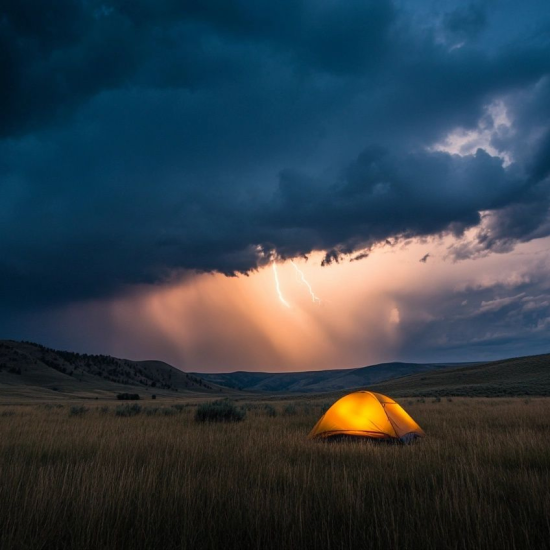
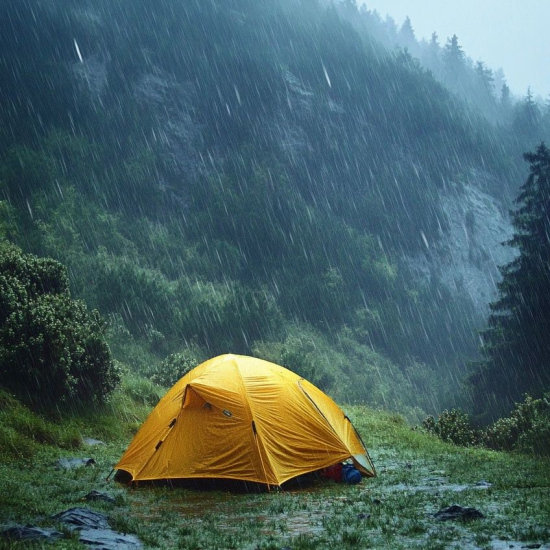
No Comment! Be the first one.